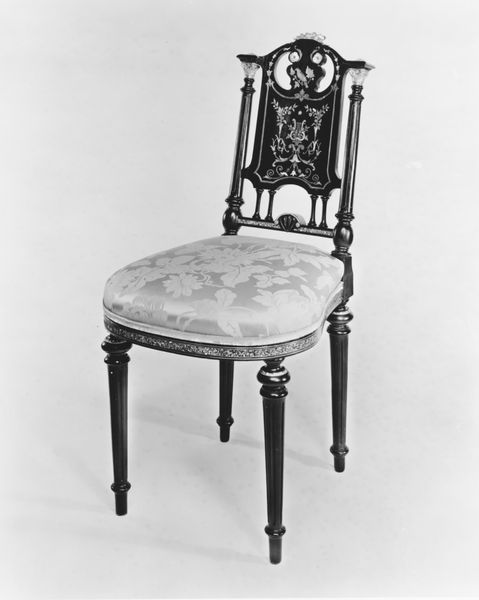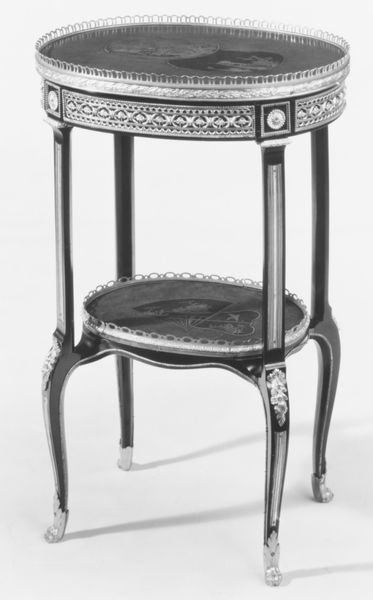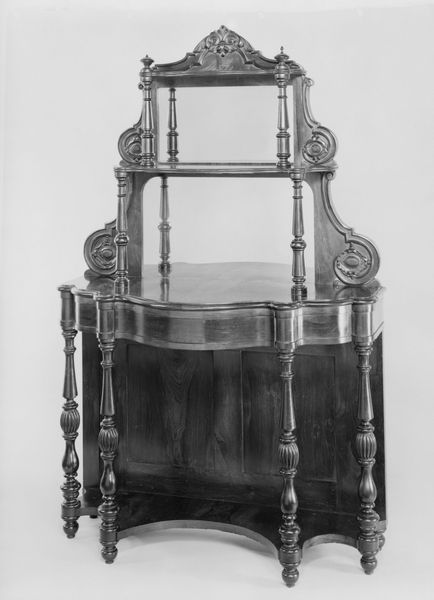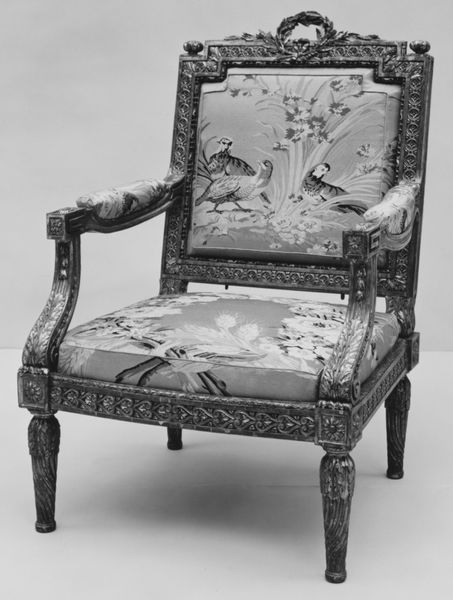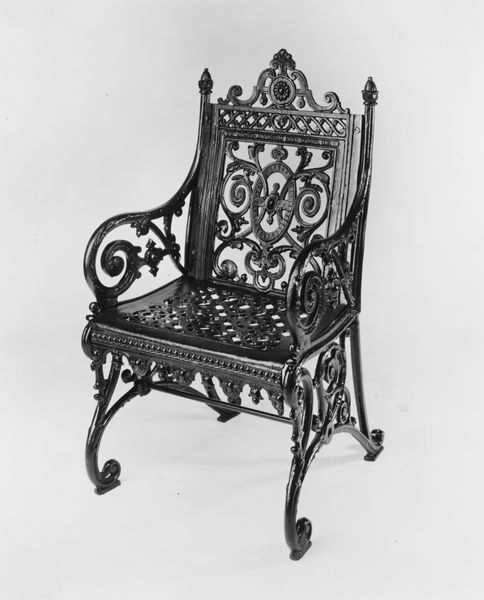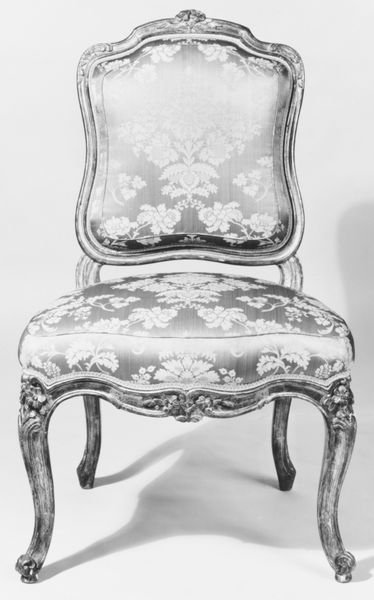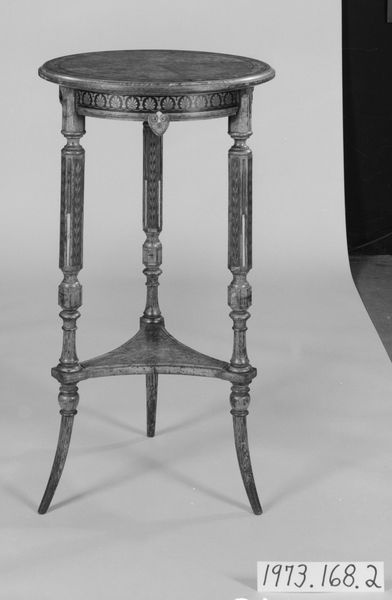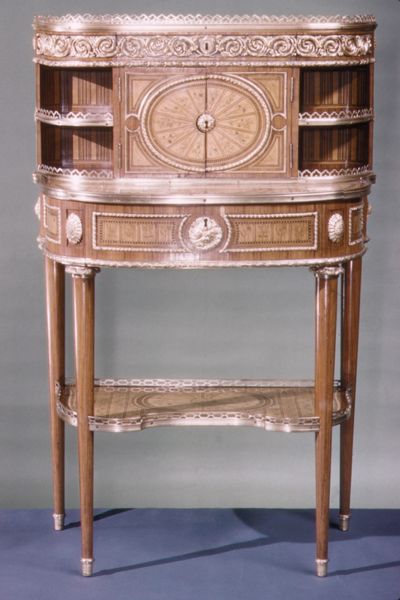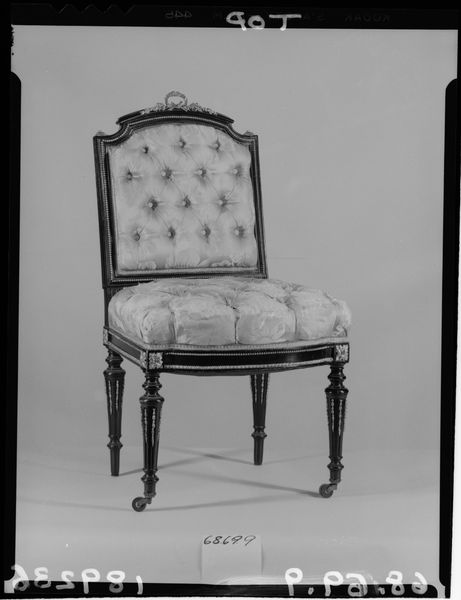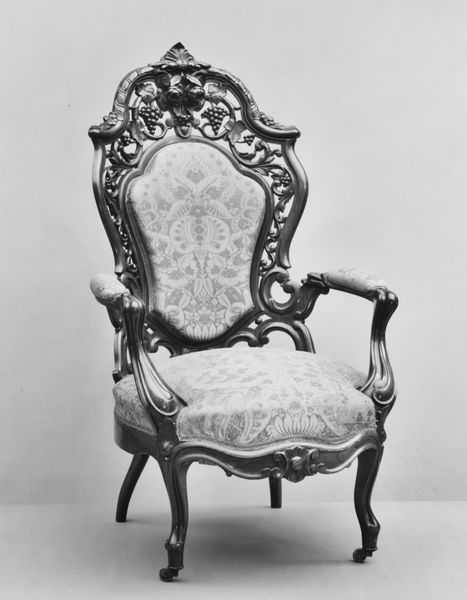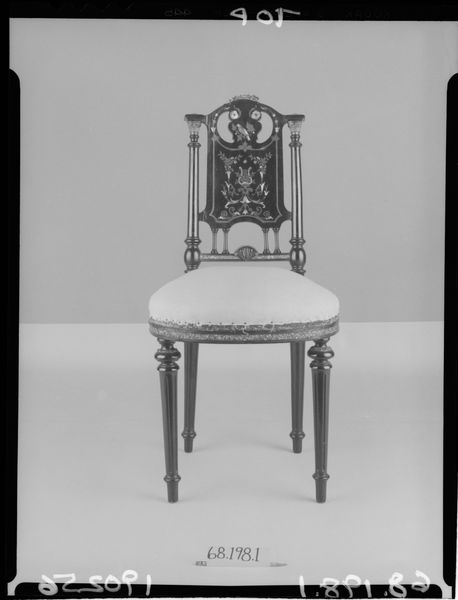
Dimensions: H. 27-1/4 in. (69.2 cm); Diam. of top 14-1/2 in. (36.8 cm)
Copyright: Public Domain
Curator: Standing before us, we have a "Circular Worktable" crafted by Martin Carlin sometime between 1767 and 1777. It combines various materials, including wood and metalwork, representative of the Rococo and decorative arts style of the time. Editor: It has such a precious, almost fragile air. The intricate metalwork along the edges, combined with those delicate floral details—it evokes a very specific sense of refinement and, dare I say, luxury. Curator: Indeed, this piece is dripping in luxury and elegance, speaking to a specific echelon of French society. Rococo, with its emphasis on ornamentation and asymmetrical design, became a powerful visual language for expressing social status. It marked a departure and a new visual language against absolutism by creating spaces of intimacy within the private sphere for the wealthy merchant class. The function of the item also represents the shift in power, where wealthy merchants had leisure time for at home crafts and activities. Editor: Those delicate floral motifs – you see them repeated on the drawer. Do you think these were specifically chosen, perhaps holding some symbolic significance within the visual rhetoric of wealth and gender at that moment in French history? Were particular blooms, arrangements and patterns considered progressive? Curator: Absolutely! Flowers were an extremely important symbol in the Rococo era, with certain blooms associated with various ideals and meanings – an encyclopedic language unto themselves. The choice would signal coded meaning, accessible to those initiated to its codes. Considering that it is a 'work table,' it would most probably be used for the activities of the feminine private sphere: embroidery and intellectual correspondence, for example. In this perspective, a subversive act of social rebellion against traditional absolutist values that placed men in positions of public prominence. Editor: So the motifs become a quiet yet powerful statement! Even those elegantly curved legs… I’m intrigued by how visual elements combine and perpetuate symbolic, psychological impact over time, resonating still, even if subconsciously, with present viewers. The language of flowers continues in various forms and practices until today. It would be a matter of decoding what sort of tradition continues in our world as memory. Curator: Absolutely. It’s important to recognise how objects like these are so intertwined with cultural practices and gendered assumptions of leisure during that era, while containing a surprising social and even, feminist agency in a world dominated by patriarchy and wealth. It forces us to constantly unpack how material culture can reinforce—and perhaps challenge—notions of femininity. Editor: Precisely! Understanding such artwork helps us consider how encoded visual vocabulary is created, inherited and reproduced; so, ultimately, reflecting back to us the social and psychological conditions of a society.
Comments
No comments
Be the first to comment and join the conversation on the ultimate creative platform.
